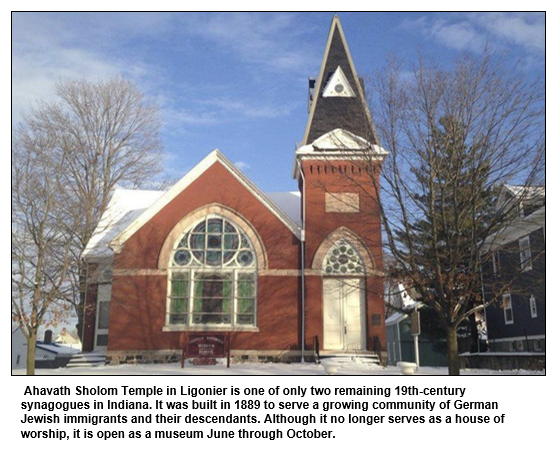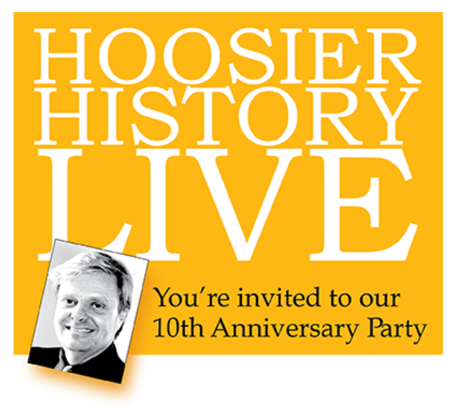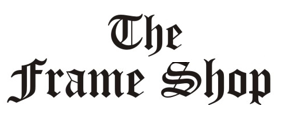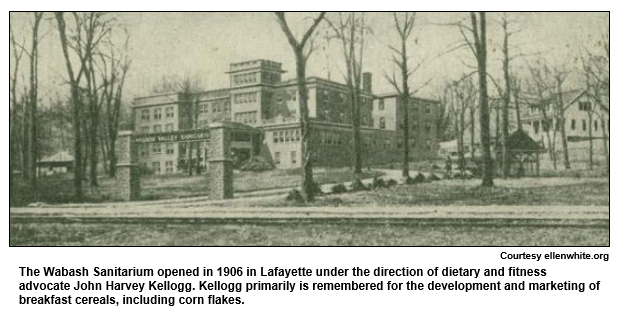Saturdays, noon to 1 p.m. ET on WICR 88.7 FM.
Or listen live from anywhere on WICR Online!
Our call-in number during the show: (317) 788-3314

Jan. 27, 2018
From the scrap heap of history: the Jewish salvage industry in Indiana
The American dream takes many forms. For many Jewish Hoosiers during the early to middle years of the 20th century, it took the form of the family-owned scrap yard, independently operated and passed down from one generation to the next.
For many of these families, the road from impoverished immigrant to wealth and social prominence was paved with the detritus of an industrial economy: Crushed automobile frames. Mangled copper wiring. Smashed aluminum cans. All were to be melted down and turned into raw materials that fed the booming American economy during the second half of the 20th century.
This week's Hoosier History Live show will explore the prominent role of scrap metal recycling among Jewish families in Indiana. Guest host Mick Armbruster will be joined in studio by three guests, each with a unique perspective on the history of the Jewish salvage industry in Indiana:
Trent Pendley, amateur historian, retired fine jeweler and fifth-generation Hoosier. He is past president of the Indiana Jewish Historical Society and lives in Furnessville in the Indiana Dunes. Trent was a previous guest on Hoosier History Live for a show on Jewish immigration to Indiana. He also wrote the historical novel Toys in the Closet, which is set in a beach home among the Indiana Dunes.
- Marty Kroot of Indianapolis, former owner of K&F Industries salvage business. Marty began working in his family's scrap yard as a teenager and honed his skills over five decades in salvage.
- Joan Wolf of Indianapolis, philanthropist and board member of the Indiana Jewish Historical Society. Inspired by her sister-in-law's work on a book on the Jewish history of Madison, Ind., Joan initiated and coordinated the compilation of Bonds as Strong as Steel: A History of Indiana Scrap Metal Dealers and their Families.
Before a wave of consolidation changed the industry in the late 1990s, almost 90 percent of American scrap yards were owned by Jewish families, a statistic that seems to hold true for Indiana as well. Why did so many prominent scrap businesses in Indiana and the Midwest carry Jewish family names? What was it about salvage that attracted Jewish entrepreneurs and encouraged them to build thriving businesses in this field?
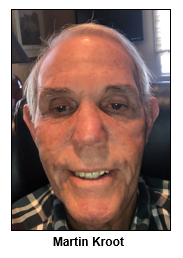
Coming from a tradition of entrepreneurship in the Old Country, Jewish immigrants often were well-suited for the role of peddler in their new homeland, and low start-up costs made the profession accessible to even the poorest among them. In some cases, anti-Semitism played a role in shaping the economic destiny of Jews during the frontier era and early Hoosier statehood; as Trent will explain, Jews were forbidden from owning property in some areas of Indiana, making the nomadic life of the peddler one of their few options for engaging in trade.
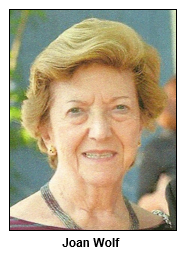
Guests Marty Kroot and Joan Wolf both grew up in Jewish families that owned salvage businesses. We'll hear some of their early memories of the family junk yard, including Marty's experience learning the trade while still a teenager. He cut his salvage teeth at the Alex Cohen’s Sons Inc. scrap yard on the southside of Indianapolis, which his father, the late Sam Kroot, purchased in 1949. Joan will explain the important philanthropic role played by many Jewish scrap business families in Indiana.
Marty also will share his perspective on how the salvage business has evolved over the years, from predominantly family-owned companies to the huge global conglomerates that dominate the industry today.
History Mystery
Among Jewish Hoosiers who have gone on to achieve national prominence, some stand out as true celebrities. Robert Wise, who was born in Winchester, grew up in Connersville and made his mark in Hollywood directing such hit films as West Side Story and The Sound of Music. Nobel Prize-winning economist Paul Samuelson, born in Gary, served as adviser to President John Kennedy and popularized the term "stagflation" in the '70s. In more recent years, Hoosiers have taken pride in Indianapolis native and astronaut David Wolf, who graduated from North Central High School and Purdue University and has served on four space missions.
For today's History Mystery, we turn to a star in the realm of classical music. Our mystery Jewish Hoosier was born and raised in Bloomington and began taking violin lessons at age four. Ten years later he appeared as a soloist with the Philadelphia Orchestra, and at age 17 he made his Carnegie Hall debut with the St. Louis Symphony.
A complete list of his musical prizes and accomplishments would stretch on for pages and would include Grammy awards, Oscar-nominated performances and a presidential appointment. We hope that among his proudest achievements, however, are being designated an “Indiana Living Legend” in 2000 and receiving the Indiana Governor’s Arts Award in 2003.
Question: What is the name of this Jewish Hoosier, widely regarded as one of the most celebrated violinists of his era?
The call-in number is (317) 788-3314. Please do not call in to the show until you hear Mick pose the question on the air, and please do not try to win if you have won any other prize on WICR during the last two months. You must be willing to give your first name to our engineer, you must answer the question correctly on the air and you must be willing to give your mailing address to our engineer, so we can mail the prize pack to you. The prize is two passes to the Indiana History Center, courtesy of the Indiana Historical Society, and two passes to Story Inn in Brown County, courtesy of Story Inn.
Roadtrip: Ahavath Sholom Temple in Ligonier
This week's guest Roadtripper Wendy Soltz invites us to the northeast corner of the state to reflect on the legacy of the Jewish community of Ligonier, specifically the Ahavath Sholom Temple, one of only two remaining 19th-century synagogues in Indiana.
The temple was built in 1889 to serve a growing community of German Jewish immigrants and their descendants, and its name Ahavath Sholom means "peace-loving" in Hebrew. The brick synagogue was constructed in typical German Gothic style and features details specific to a Jewish place of worship, such as the protruding Torah ark at the back of the building, which at one time would have held the Torah scrolls inside.Visitors to Ahavath Sholom temple are immediately struck by three large leaded-glass windows displaying scenes of Biblical King David's life, along with menorahs and the Star of David. On either side of the Torah ark, the stained-glass windows depict the Ark of the Covenant and burnt offerings.
Due to a shrinking of Ligonier's Jewish population starting in the 1930s, Ahavath Sholom reduced their religious services to high holy days and eventually closed by the 1950s. The building was used by other congregations for several decades but eventually was purchased by the Ligonier Public Library and now serves as a museum of the town's history and its Jewish heritage.
Wendy welcomes Hoosier History Live listeners to come visit Ahavath Sholom, but you'll have to wait until summer to complete this Roadtrip; the temple is open from June through October on Saturdays 1-4 p.m. and on Sunday and Tuesday afternoons by appointment (call 260-894-4511 to arrange a time).
10 years on the air!
Join us March 1 for our anniversary soiree!
Can you believe it? Hoosier History Live has been on the air 10 years.
To celebrate, we are throwing another of our famous anniversary parties!
- When: Thursday, March 1, 2018, from 5 to 7:30 p.m.
- Where: Indiana Landmarks Center, 1201 Central Ave., Indianapolis, IN 46202.
Featured events at the party will include live "History Mystery" quizzes by host Nelson Price, with fabulous prizes. Live music will be a part of the festivities as well. We are particularly looking forward to brief remarks by Indianapolis Mayor Joe Hogsett and Danny Lopez, Deputy Chief of Staff, Indiana Governor’s Office. And you never know what other notables will be on hand to share remarks and good cheer with our history-loving crowd, which includes listeners, readers and of course many of our distinguished on-air guests.
Bring your Indiana photos from any era, including the present, for scanning by the Indiana Album, an online catalog of photographs from Indiana's past. And if the spirit really moves you, come dressed as your favorite historic character!
Delicious catered cuisine and cash bar will be provided by MBP Distinctive Catering. Let's celebrate together! Click on this RSVP link today to let us know you're coming. It helps us out a lot if you use the form to let us know you'll be there
Nelson Price, host and historian
Molly Head, producer/project manager, (317) 927-9101
Michael Armbruster, associate producer
Cheryl Lamb, marketing and administrative manager
Richard Sullivan, senior tech consultant
Pam Fraizer, graphic designer
Garry Chilluffo, special events consultant
Please tell our sponsors that you appreciate their support!

 Acknowledgments to Monomedia, Visit Indy, WICR-FM, Fraizer Designs, Heritage Photo & Research Services, Henri Pensis, Chris Shoulders and many other individuals and organizations. We are an independently produced program and are self-supporting through organizational sponsorships and individual contributions. We do not receive any government funding. Visit our website to learn how you can support us financially. Also, see our Twitter feed and our Facebook page for regular updates.
Acknowledgments to Monomedia, Visit Indy, WICR-FM, Fraizer Designs, Heritage Photo & Research Services, Henri Pensis, Chris Shoulders and many other individuals and organizations. We are an independently produced program and are self-supporting through organizational sponsorships and individual contributions. We do not receive any government funding. Visit our website to learn how you can support us financially. Also, see our Twitter feed and our Facebook page for regular updates.
Thank you!
We'd like to thank the following recent, new and renewal contributors whose donations help make this show possible!
- Jo Ellen Meyers Sharp.
- Theresa and David Berghoff.
- Juliet Emanuel.
- Emerson Houck.
- James H. Madison.
- Tom Spalding.
- Robin and Deneice Jarrett.
Feb. 4, 2018 - Upcoming
Health fads, diets and healing techniques during the Gilded Age
Patent medicine tonics to treat "nervous disorders" - including mail-order products marketed by Miles Laboratories in Elkhart - were popular during the late 1800s and early 1900s. So were herbal remedies like Lydia Pinkham’s Vegetable Compound, which purported to cure a variety of "female complaints." Hoosier History Live explored them during an intriguing show last March about Health care during the Gilded Age.
Tonics, lotions and potions weren’t the only "cures" sold during that era, though.

Beginning in 1876, health activist and physician John Harvey Kellogg presided at the Battle Creek Sanitarium in Michigan. Under Kellogg’s direction, the Wabash Sanitarium - also called the Wabash Valley Hospital - opened in 1906 in Lafayette. During our show, David Schuster will discuss the dietary and fitness advice advocated by Kellogg (1852-1943), a vegetarian who, with his brother Will, primarily is remembered for the development and marketing of breakfast cereals, including corn flakes.
During the early 1900s, President Teddy Roosevelt called for Americans to live a "strenuous life" that, as David puts it, "manifested itself in healthy lifestyles of camping, exercise and shopping - yes, shopping was seen as a way for women to stay active and healthy."
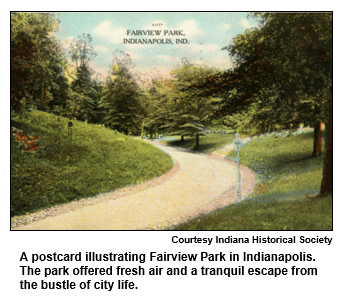
During our show, David also will discuss the rise during the late 19th century of spiritual healing led by movements such as "New Thought" and Christian Science.
This program will be the first of two shows focusing on aspects of healthcare in earlier eras.
© 2018 Hoosier History Live. All rights reserved.
|



